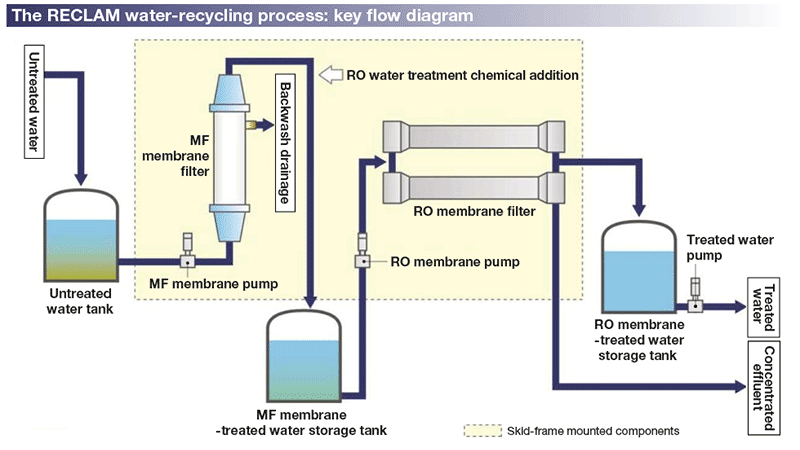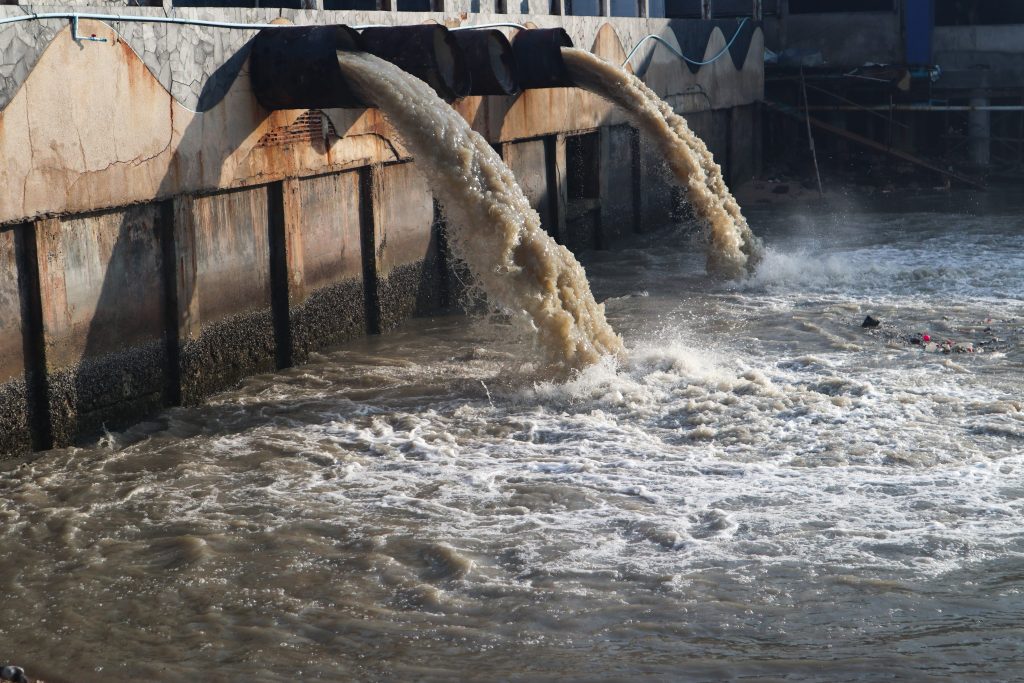Industrial Waste Water Treatment-- Comprehensive Systems for Wastewater Disposal
Industrial Waste Water Treatment-- Comprehensive Systems for Wastewater Disposal
Blog Article
Trick Techniques in Industrial Waste Water Therapy Procedures
The treatment of commercial wastewater is a vital element of ecological management, entailing a series of methods created to mitigate the impact of contaminants. From the basic physical techniques that separate solids to the advanced chemical and biological processes that target certain toxins, each strategy plays an important role in attaining water high quality requirements. Advancements in modern technologies such as membrane filtration and advanced oxidation procedures supply cutting-edge services for boosting treatment efficacy. Comprehending how these approaches interconnect and their implications for sustainability raises vital concerns regarding the future of wastewater monitoring in market.
Physical Treatment Methods
How effectively can physical therapy techniques address the intricacies of commercial wastewater? Physical treatment techniques play a critical role in the initial phases of wastewater monitoring, concentrating mainly on the elimination of solids and large particulates. Methods such as sedimentation, flotation, and filtration are necessary for minimizing the concentration of suspended solids, consequently improving the effectiveness of succeeding therapy procedures.
Sedimentation involves the gravitational settling of solids, permitting the splitting up of larger materials from the wastewater. This method is specifically reliable in clearing up water prior to chemical or biological therapies. Filtering, on the other hand, utilizes various media to record particle matter, ensuring that smaller contaminants are removed. This technique can be tailored to suit various sorts of commercial effluents, creating more clear effluent streams.
In addition, flotation protection approaches, which use air bubbles to lift suspended solids to the surface area for removal, are effective in dealing with wastewater with high focus of fats, oils, and greases. Overall, physical therapy methods work as a crucial very first step in the comprehensive management of commercial wastewater, ensuring that the lots on subsequent therapy phases is minimized and enhancing overall therapy efficacy.
Chemical Treatment Techniques
While physical therapy approaches prepared for efficient wastewater administration, chemical treatment techniques are essential for addressing the more intricate contaminants often discovered in commercial effluents. These methods use various chemical agents to speed up, reduce the effects of, or oxidize damaging substances, ensuring a more extensive elimination of pollutants.
One common approach is coagulation and flocculation, where chemical coagulants such as aluminum sulfate or ferric chloride are contributed to advertise the gathering of put on hold particles. This procedure boosts solid-liquid splitting up, lowering turbidity and improving water top quality. Additionally, neutralization procedures are employed to readjust the pH of wastewater, utilizing bases or acids to counteract acidic or alkaline streams, specifically.
Oxidation-reduction responses play a crucial role in derogatory organic impurities and virus. Chemical oxidants like chlorine, ozone, or hydrogen peroxide are used to damage down complex natural compounds, making them less damaging or much more eco-friendly. Progressed oxidation procedures (AOPs) combine multiple oxidation techniques to boost toxin elimination efficiency.
Biological Therapy Processes
The effectiveness of wastewater therapy is considerably enhanced by organic therapy procedures, which harness the natural metabolic tasks of microbes to disintegrate organic matter and eliminate contaminants. Industrial Waste Water Treatment. These processes largely entail anaerobic and cardio digestion, each customized for details kinds of wastewater
Cardiovascular therapy procedures make use of oxygen to support microbial growth, promoting the breakdown of organic contaminants into co2 and water. Typical approaches consist of activated official statement sludge systems, where oygenation storage tanks help with the mixing of wastewater with microorganisms, and trickling filters, which motivate biofilm development on media surfaces.
On the other hand, anaerobic therapy processes occur in the lack of oxygen, utilizing anaerobic germs to decompose raw material, causing biogas production, a sustainable power source. Anaerobic digesters are commonly employed in industrial settings for this objective, properly reducing the quantity of sludge while creating valuable biogas.
The option of a biological treatment technique depends upon wastewater attributes, treatment objectives, and governing requirements. The link combination of organic processes in wastewater therapy not just improves contaminant removal performance but additionally promotes sustainability by reducing chemical use and sustaining resource recovery.
Advanced Oxidation Processes

Common AOP methods consist of Fenton's ozonation, reagent, and photocatalysis. Fenton's reagent, a mix of hydrogen peroxide and ferrous iron, catalyzes the formation of hydroxyl radicals, making it effective for dealing with wastewater containing phenolic compounds and other stubborn materials. Ozonation makes use of ozone as a powerful oxidant, qualified of degrading a variety of organic pollutants while all at once sanitizing the effluent. Photocatalysis employs light-activated catalysts, such as titanium dioxide, to improve oxidation reactions and remove contaminants.
AOPs provide several benefits, consisting of minimized sludge production and the ability to treat wastewater with high focus of natural contaminants. However, the execution of AOPs needs careful factor to consider of operational parameters and cost-effectiveness, making certain that these innovative techniques are appropriately integrated into existing wastewater therapy systems.
Membrane Layer Purification Technologies

Microfiltration is efficient for eliminating put on hold germs and solids, while ultrafiltration targets smaller organic molecules and infections. Nanofiltration links the gap in between ultrafiltration and turn around osmosis, effectively eliminating natural compounds and divalent ions. Reverse osmosis gives the highest degree of purification, utilized mainly for desalination and removing mono-valent ions.
Membrane technologies provide countless benefits, consisting of reduced energy consumption contrasted to standard treatment approaches, modular layout for scalability, and the potential for water healing and reuse. Nevertheless, challenges such as membrane fouling and the need for normal upkeep should be dealt with to make sure system efficacy. Overall, membrane filtration innovations stand for an essential element of contemporary industrial wastewater therapy approaches, promoting sustainability and resource conservation in water administration.
Conclusion
In final thought, industrial wastewater therapy utilizes a diverse variety of methods, consisting of physical, chemical, biological, and advanced approaches. Each method plays a vital function in effectively dealing with various impurities, boosting water top quality, and advertising source sustainability. The combination of these methods fosters an extensive therapy approach, guaranteeing that commercial effluents fulfill regulatory standards while decreasing environmental effect. Continued improvements in these techniques will certainly better boost the effectiveness and efficiency of wastewater therapy processes in commercial settings.
The therapy of industrial wastewater is an essential element of ecological administration, including a range of techniques designed to mitigate the impact of contaminants.Just how successfully can physical treatment techniques deal with the intricacies of commercial wastewater?Advanced oxidation procedures (AOPs) stand for an innovative method in industrial wastewater treatment, designed to efficiently break down organic contaminants that are usually immune to standard therapy approaches (Industrial Waste Water Treatment).In verdict, commercial wastewater therapy uses a varied selection of strategies, consisting of physical, chemical, organic, and progressed approaches. Proceeded improvements in these approaches will certainly even more improve the performance and efficiency of wastewater therapy procedures in commercial setups
Report this page